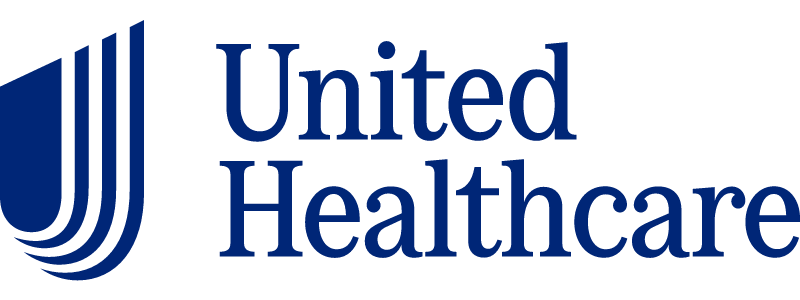Table of Contents
Sex is an uncomfortable topic for most teens to talk about with their parents. Porn is even more awkward to discuss. But discussing both is essential for providing teens with education about safe sex practices and the tools to protect their mental and physical health.
Porn is not inherently harmful to youth from a medical perspective, however excessive use or having no educational context from parents or trusted adults can cause problems such as increased confusion around sex or relationships, unrealistic expectations about sex, negative body image, and increased risk of porn addiction [1].
Teens who discuss pornography with a trusted adult report that talking, although uncomfortable, made them feel better about sex and themselves. Read on to understand the impact that sexualized media has on today’s teens and how to engage in honest conversations with your teen about porn to help them build healthier perspectives around sex.
The Impact of Porn on Youth
Many teens today are seeking out porn for sex education. Nearly 93% of teenage boys and 52% of teen girls have reported they have watched porn, yet only 45% say they feel it provides them with helpful information about sex [2].
“Effortless online access to pornography is leading to early, often accidental exposure, which harms the overall well-being of young children, particularly their psychological and physical development,” says Activist and Educator, Romina Gatt Lopez.
With the rise in platforms such as OnlyFans, Snapchat+, and Premium X Accounts (formerly Twitter), pornography and hypersexualized media have become more accessible for teens than ever. The average age of porn exposure for years has been 12 to 13, but now many kids are being exposed as young as 9 to 11. The earlier teens begin watching porn, the higher at risk they are for developing an addiction to porn [2].
Identifying Symptoms of Teen Porn Addiction
Porn addiction is a type of behavioral addiction (such as gambling, shopping, or playing video games) that is characterized by excessive porn use, reduced daily functioning, and the inability to stop watching porn despite negative consequences.
Men tend to report much higher rates of porn addiction, and teen porn addiction is a bit harder to gauge, although reports are thought to be much higher among boys. However, self-reports are low due to various reasons, including embarrassment and the taboo nature of porn [3].
Some signs that may indicate your teen struggles with an addiction to porn include:
- Increased secrecy around devices or digital habits
- Quickly or regularly clearing their internet browser
- Academic decline, lack of motivation, neglecting responsibilities
- Mood swings, irritability, and aggression
- Sleep disturbances from late-night porn use
Exploring Consequences of Teen Porn Addiction
Porn, when watched excessively and without educational context, can cause several consequences that impact the physical and mental health of youth.
Emotional and Psychological Effects of Pornography
Excessive porn use in teens can cause several effects that impact them emotionally and psychologically. Some of these include [4]:
- Impaired Reward System: Just as with substances or another behavioral addiction, porn addiction can alter brain pathways in the basal ganglia and neurotransmitters such as dopamine. Both play a key role in executive functioning, motivation, attention span, habit development, and addiction.
- Anxiety and Depression: Excessive porn use is linked to increased mental health problems and stress.
- Guilt and Shame: Teens may feel intense guilt or shame related to porn use, driving them further into isolation and creating a vicious cycle that negatively impacts mental health.
- Low Self-Esteem: Teens compare their bodies to professional performers, leading to reduced self-esteem, negative body image, or feelings of inadequacy.
Impact on Relationships and Self-Esteem
Porn can set unrealistic expectations for how sex should look or feel. Studies have found that porn addiction causes decreased attraction to partners, reduced intimacy, and can increase conflict due to secrecy or emotional withdrawal. This can make it harder for teens to build safe, healthy, intimate relationships as they grow into adulthood [5].
Not A Form of Sex Education
Many teens (especially younger teens) do not realize that pornography is often performed by professional, paid actors and actresses. Porn is a form of adult entertainment. Without this knowledge, teens may think that porn reflects reality, with many who report watching to learn what to do. Unfortunately, this often includes unsafe sex, since protection such as condoms is hardly used in pornography.
How To Talk With Teens About Porn and Sex
Parents play a key role in the beliefs and perspectives that teens have about sex and porn. If you think your teen is struggling from porn addiction or excessive porn use it’s important to address the issue and get professional help if it is impairing their psychological health.
However, even if your teen doesn’t have a problem with porn, it doesn’t hurt to touch on taboo topics, which can increase trust and improve the quality of relationship with your teen.
Be Real, But Avoid Judgement
Avoid passing judgment on your teen, which increases the likelihood of them emotionally withdrawing. Create a safe space, but also realize that even if you have a good relationship with your teen, they may not want to discuss this topic.
If your teen does decide to open up to you about porn use, sex, or other taboo topics try to:
- Actively listen
- Ask engaging questions
- Express concerns using “I” statements
- Avoid “You shoulds” with teens
- Express gratitude and thank them for sharing
Encouraging Open Discussions and Sex Ed Early On
Make it a point to create a space in the home that encourages open discussion and sexual education from a young age, so by the time your kiddo hits adolescence, they feel comfortable coming to you in times of need. Of course, these should be age-appropriate. Topics can differ by age group and may include:
Young Children 3 to 5
- Naming private body parts using correct terms
- Expressing no to unwanted touch (basic consent and boundaries)
- Discussing families, terms, and family types (mommy, daddy, brother/sister)
Early School-Aged Children 6 to 8
- Introduce how babies are made if asked
- Explain basic puberty changes
- Continue teaching and reinforcing the concept of consent
- Explain emotions (e.g., having a crush) and how sometimes they can arise in friendships
Tweens 9 to 12
- Detailed info on puberty (pubic hair, menstrual cycle, acne)
- Introduce basic information on intercourse, contraception, and STD prevention
- Talk about porn, teach tweens it’s not an educational resource, but a form of adult entertainment
- Discuss basic cybersecurity (not giving away info online)
Teens 13+
- Discuss more complex cybersecurity themes, such as digital privacy laws, and the legal consequences of sending or spreading pornographic information of minors under 18
- Complex topics such as consent, healthy relationships, domestic abuse, and sexual orientation
- In-depth STI and STD education/prevention
- Address the media and the influence of pornography
- Talk about attachment styles, emotional intimacy, and boundaries
Make It A Private Conversation
Sexuality is a deeply private topic for teens. Avoid bringing up the topic in front of other family members, such as grandparents or siblings. Spend some one-on-one time with your teen, going out for a day or doing an activity where they feel more comfortable opening up.
Accept It Will Probably Feel Awkward
People of all ages can feel awkward talking about pornography, especially in families where taboo topics such as sex are barely discussed. Keep the conversation light-hearted and comfortable, but also stick to the facts about sexual health, consent, and the need for mature communication and setting boundaries when it comes to sex.
Set Boundaries
There are several ways to set limits around screen time use and the type of media that gets consumed. Apps and programs that offer parental controls can help restrict what websites your teen can access. This is often recommended for children and younger teens.
Providing Education and Support for Teens and Their Families in Texas
Clearfork Academy is a network of behavioral health facilities in Texas committed to helping teens recover from behavioral addictions, substance abuse, and mental health disorders. We understand the importance of addressing porn, sexualized media, and online trends, all of which play a significant role in the lives of today’s youth.
If you think your teen is struggling with porn addiction, reach out to our team and we can support your family.
Sources
[1] Bordoloi, M., Durkin, I., & Aggarwal, A. (2024). Effects of Pornography on Youth: A Review. Missouri medicine, 121(3), 195–197.
[2] Pluhar, E. et al. (2023). Pornography use among adolescents and the role of primary care. Family medicine and community health, 11(1), e001776.
[3] Bob, P. et al. (2023). Pornography Consumption and Cognitive-Affective Distress. The Journal of nervous and mental disease, 211(8), 641–646.
[4] Hajela, R. (2015). Neuroscience of Internet Pornography Addiction: A Review and Update. Behavioral sciences (Basel, Switzerland), 5(3), 388–433.
[5] Hanseder, S. et al. (2023). Males’ Lived Experience with Self-Perceived Pornography Addiction: A Qualitative Study of Problematic Porn Use. International journal of environmental research and public health, 20(2), 1497.
[6] Romina Gatt Lopez. 2024. Advocating for Youth in a Hypersexualized World. Culture Reframed.

Meg Sherman
Family Program Therapist
Meg Sherman holds a Master of Arts in Marriage and Family Therapy from Utah Valley University, is licensed as a Marriage & Family Therapy Associate and Chemical Dependency Counselor in the state of Texas, and focuses her professional areas of study on trauma recovery, neuroscience, and relationship dynamics.
She has over 20 years of experience working with adolescents, first as a church youth group leader, then as a high school theatre teacher. Following the joys and challenges of helping her children through various diagnoses and substance use struggles, Meg entered the mental health field and pursued training in EFIT, Gottman, and EMDR techniques.
She currently lives in Granbury with her husband and an utterly spoiled cat, where she enjoys playing harp/piano, composing music, and writing young adult fiction.




